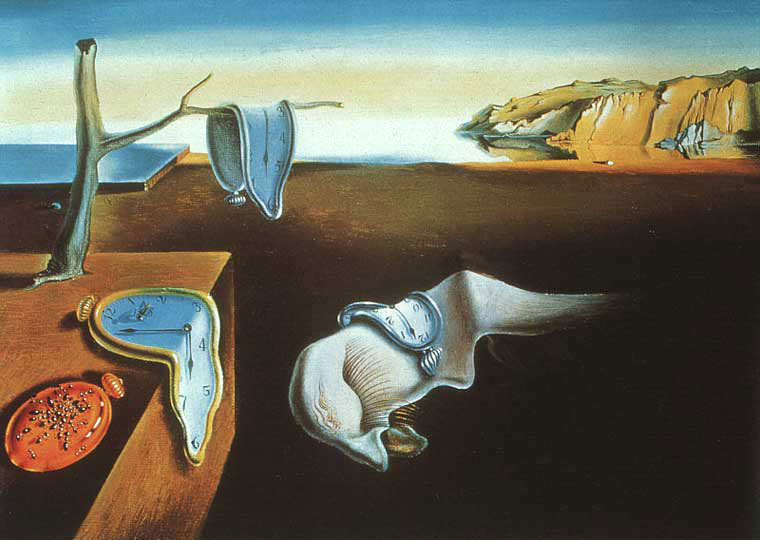Being an engineer I'm quite taken by Benny Shanon's
parametric model of consciousness. However I must admit his 13 parameters seem
a bit artificial and he's very light on providing the normal ranges for them,
although I was originally drawn to his approach by his contention that he had
experienced the abnormal ranges. Anyway, given the bones of a model I decided
to try to use it to summarise the module.
Here's my attempt:
Agency
Cognition is not merely the firing of neurons in a brain: it
is the brain, its body, the body’s environment and how these interact and
adapt. The same body will perceive and understand the world differently in
different environments. When we first find ourselves in a new country with new
and different customs, language, weather, etc. we must consciously integrate
the things we previously took for granted in order to relearn to operate.
“Cognition is the
adaptive interaction between an autonomous agent and its environment.”
“An enactive view sees the person as a tangle of skills and
motivations which will be in a more or less unique combination in a given
individual”
Marek McGann
Individuation.
I am distinctly me because I share the world with you, the contrast is me. This
world is not just stimuli to be processed and acted upon, rather it's an interaction between me and it requiring no interpretation
- I simply need to experience it.
“Making sense of you is a puzzle I need to solve”
Alva Noe Out of Our Heads p183
Boundaries of the self and the
differentiation of states
At times it can be difficult to tell if my thoughts are my
own or if they’re the result of my movements creating an image in others’
minds which make them act, causing me to interpret them to form a thought
that could only originate within this coupled system. This emergent process can
lead us to places we never dreamt of, and are mostly unaware of, we're making sense of things.
Objects have shape and weight, but they can also have a
purpose – a block of stone can be both a stone and a paper weight: both an
object in its own right and an object with a use. When its use is consistent
with its size and a purpose, for example a bowel shaped object that’s the right size to fit in
my hand can be a cup, it has an affordance. Affordance is useful for calibration and calibration keeps us grounded. In many
cases we can imply a reference for mass, speed, size etc. by reference to use.
“The same holds for conscious experience. Both the sense of
self and the perception of the world presuppose standards, hence calibration.”
Altered States,
Benny Shanon
Where is consciousness located? How much of me is involved
in how I perceive the world? How much of the things I wear and use are not just
part of my perceptive organs but may replace/enhance (white cane) or mimic
(phantom limbs) what I consider to be myself. When I write do I feel the pen
feeling the paper, or do I simply feel the paper? Surely it’s the latter.
After I learn to stand, and to walk, and to run and jump I
begin to devolve these skills to my unconscious, and even to the consciousness inherent
in the mechanism of my body: no need to plant my feet, simply let them fall
because their momentum, the terrain and their locus of movement form a closed
system with repeatable outcomes.
Time.
Objective time
Maxwell’s laws do not require a direction
for time, yet all the electromagnetic signals in the universe we've seen move from the
past to the present. Similarly, order does not spontaneously occur
in matter – the second law of thermodynamics proceeds in one direction: from
order to chaos, but again the laws that govern it are reversible.
Notwithstanding this, objective time is the same in all places and times (if
that’s not circular) and we have an agreed way of estimating and dividing it
relative to a fixed arbitrary meridian (Greenwich) and interval (e.g. caesium
clock).
Subjective time
We perceive the passage of time as an interval from a past
reference to the present. Time interval perception has been explained by both
storage and attention – storage refers to the amount of activity (higher
activity perceived as longer duration) and attention refers to the ratio of
attention acts to other acts (more activity leaves less attention per process,
so interval feels short). Thus the perception of time is somehow related to
processing activity, not a standard reference.
If you lived in 7th century Ireland, were frozen
in time for 300 years and woke up, you’d probably recognise everything but your
relatives. Things didn’t change much in those times (from what’s known). Personally,
I was unconscious for 3 days and had absolutely no concept of the passage of
that time. Gibson says that’s because “events are perceivable but time is not”.
The tick that happily waits 14 years for its next meal presumably has no
concept of “clock watching”, and presumably the mayfly (about 1 day as an
insect) and the sea turtle (about 50,000 days) both experience life to be full
and complete.
Time
& Human Cognition
How is it possible for human beings to know the world? We
experience the world as members of a distributed cognitive system, e.g. the
crew members on the bridge of a ship experience the world through their
respective specialist tools and the private language they use to coordinate and
assemble a working model of their world.

No comments:
Post a Comment